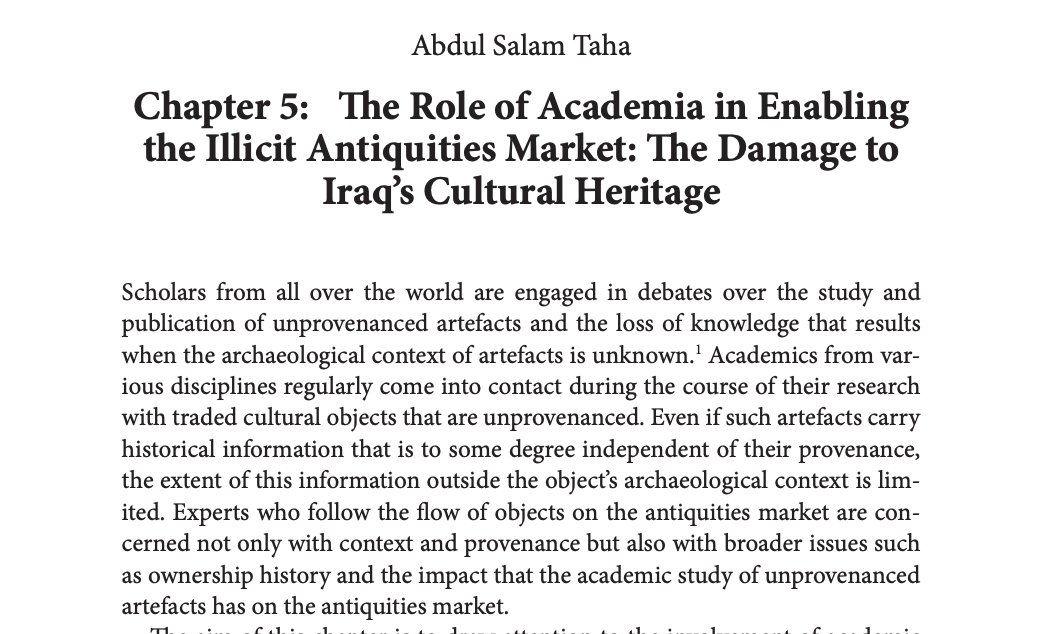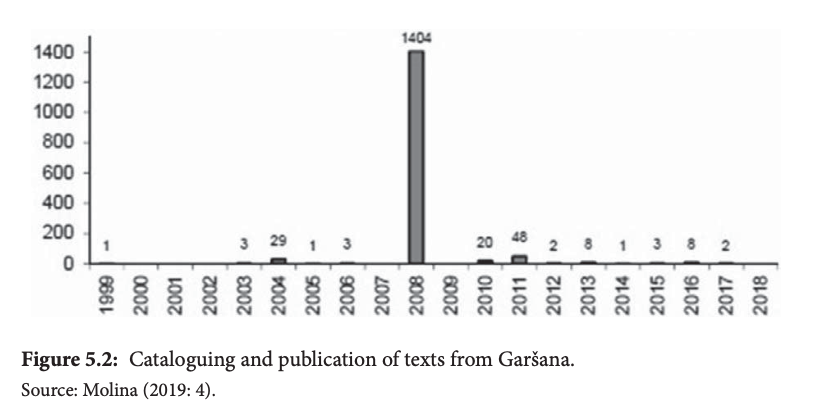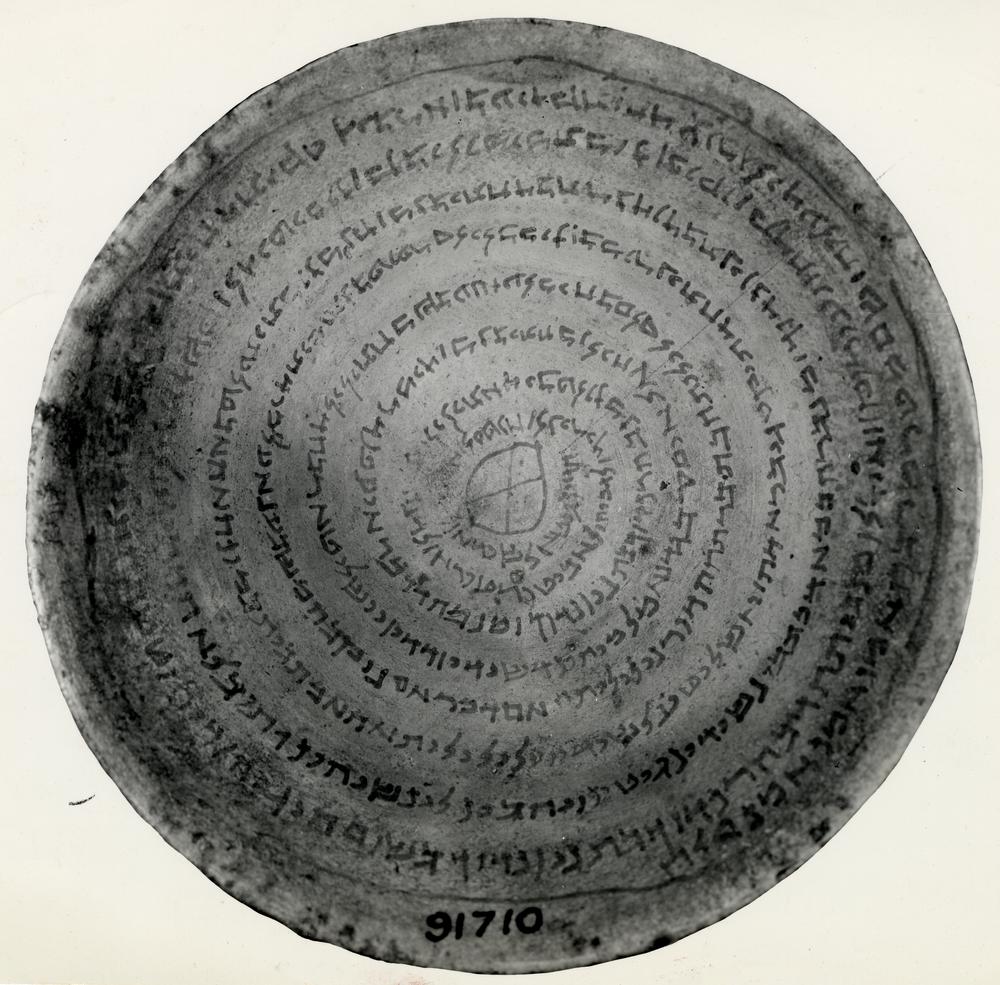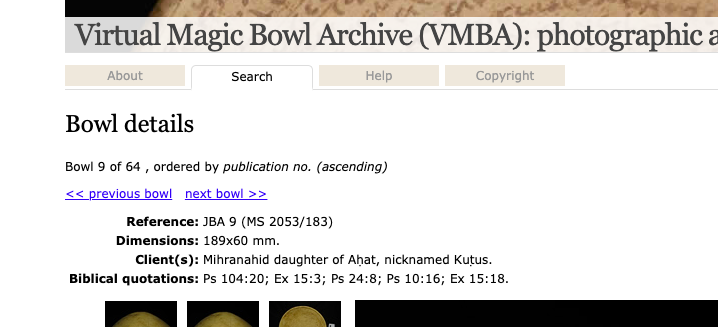On 3-26, I'll be talking about "Ancient Archives: History, Use, Ethics, Problems" at the Columbia Classics Colloquium w/ @papyrologyatman, #BrentNongbri, and #SamTaha (Abdul Salam Taha). Here's a thread on Sam's must-read article on how academics aid the illicit antiquities trade.
It's in Collapse and Rebirth of Cultural Heritage: The Case of Syria and Iraq, ed. Lorenzo Kamel (Peter Lang, 2020): https://www.peterlang.com/view/9783034341363/html/ch14.xhtml
In 1997, Jonathan Rosen bought 1,679 cuneiform tablets for $50,000. In 2003, he donated them to Cornell, declaring their value as $950,000. What happened to raise their value? A Cornell professor catalogued/translated them, showing they were all from Garšana.
We know Garšana only because looters found an ancient archive there, probably shortly before 1999, when the first known text from Garšana showed up for sale on eBay. Rosen assured Cornell the tablets were legally acquired, but...
... absolutely no one should have believed him, especially not scholars whose work would raise the value of the tablets to 20 times what Rosen paid - conveniently completing enough of this work before the donation went through to take advantage of the higher value.
Taha also looks at Martin Schøyen's 654 Aramaic incantation bowls. In 1996, Schøyen invited scholars from University College London and the Hebrew University of Jerusalem to begin to translate and publish their texts. They said "yes, please!"
Schøyen's collection represented more than a quarter of known Aramaic incantation bowls, and he began buying them in 1994. Unprecedented amounts of a category of antiquity hitting the market all at once? You suspect looting.
Big surprise: Schøyen's bowls were most likely looted in the aftermath of the 1991 Operation Desert Storm.
These bowls were buried under house floors to protect inhabitants from evil. Only one or two bowls have been found per house when excavated. Schøyen's 654 bowls represent hundreds of looted ancient houses, ripped apart for the sake of a few marketable artifacts.
But hey – unpublished corpus, so who cares, am I right?
University College London eventually investigated the bowls' provenance and disassociated it itself from the project – although we only know this through a WikiLeaks revelation.
Mind-blowingly, Schøyen’s looted bowls are now being studied at the University of Exeter, in collaboration with The Hebrew University of Jerusalem and Bar Ilan University: http://humanities.exeter.ac.uk/theology/research/projects/pre-islamic_incantation_bowls/
http://humanities.exeter.ac.uk/theology/staff/bhayro/
http://humanities.exeter.ac.uk/theology/staff/bhayro/
Funding to support scholar's publishing looted artifacts in a way that increases their value for the private collector who owns them comes from the British Academy, the UK Arts and Humanities Research Council, and (SHOCKER) the Museum of the Bible Scholars’ Initiative.
Some of this funding has gone into making a virtual archive of incantation bowls from Schøyen's collection: http://humanities-research.exeter.ac.uk/vmba/ . Oh, and if you're an Iraqi scholar who wants to use one of these images for publication, looks like you have to beg for copyright permission.



 Read on Twitter
Read on Twitter








